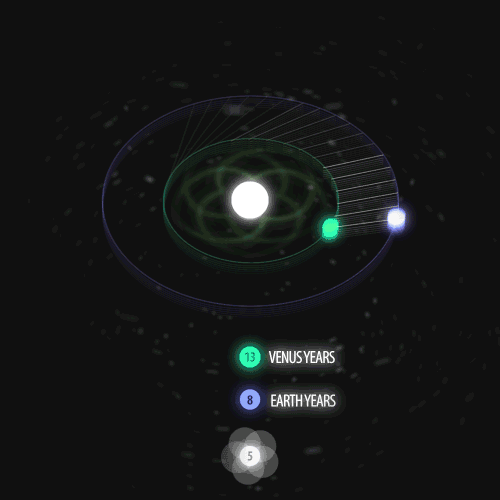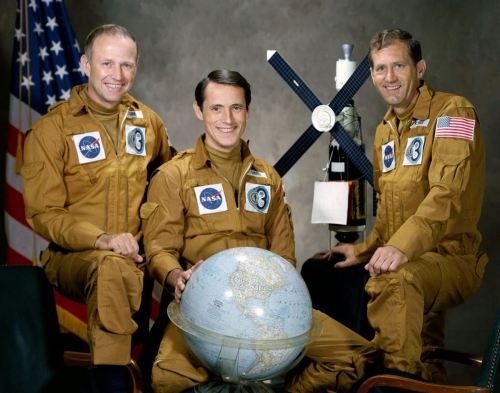Fillthevoid-with-space - Fill The Void With... SPACE

More Posts from Fillthevoid-with-space and Others

When I was in Ireland in 2013, I kept seeing signs for ‘quasar.’ I finally learned that it’s the European way of saying laser tag. It has nothing to do with quasars, which are a specific type of a specific type of galaxy. Listen to this week’s (pretty short) podcast on two types of active galaxies: quasars and blazars.
Below the cut, I have the transcript, sources, music credits, and timeline of people I talked about! If you have suggestions for topics I could cover, please send me a Tumblr message or tweet at me on Twitter at @HDandtheVoid, or you can ask me to my face if you know me. Please subscribe on iTunes, rate my podcast and maybe review it, and tell friends if you think they’d like to hear it!
(My thoughts on the next episode are the SOFIA observatory, Chuck Yaeger, or the great Stephen Hawking. The next episode will go up April 2nd.)
Glossary
active galaxy or active galactic nucleus- a galaxy with a small core of emission embedded at the center. This core is typically very variable and very bright compared to the rest of the galaxy. These galaxies emit much more energy than they should; this excess energy is found in the infrared, radio, UV, and X-ray regions of the electromagnetic spectrum.
blazar - a subcategory of active galaxy, it is an extremely bright, distant object, powered by a black hole, which emits massive amounts of energy. It is distinct from a quasar because it is even brighter.
extragalactic objects - objects outside our Milky Way galaxy.
interferometry - a group of techniques to extract information from superimposing electromagnetic waves to create interference. In radio astronomy, this is done by using a wide spread of receivers to look at the same distant object, then bringing that data together with a correlator that can create a larger, clearer picture than an individual radio telescope alone could.
lunar occultations - when stars pass behind the Moon. This is the basis for a method of determining and mapping star positions.
quasar - a subcategory of active galaxy, it is an extremely bright, distant object, powered by a black hole, which emits massive amounts of energy. It is distinct from a blazar because it is less-bright. The name is a contraction of “quasi-stellar radio source” (which is not necessarily true of all quasars—90% are radio-quiet).
torus - a donut shape.
Script/Transcript
Timeline
Walter Baade, German (1893-1960)
Rudolph Minkowski, German-American (1895-1976)
Fritz Zwicky, Swiss (1898-1974)
Gordon Stanley, New Zealander (1921-2001)
John Bolton, English-Australian (1922-1993)
Owen Bruce Slee, Australian (1924-2016)
Allan Rex Sandage, American (1926-2010)
Cyril Hazard, English (1928- )
Maartin Schmidt, Dutch (1929- )
Hong-Yee Chiu, American (1932- )
Stephen Hawking, English (1942 -2018)
Jedidah Isler
Sources
Active Galaxies via NASA (Dec 2016)
Galaxy shapes via Cornell University (April 2000)
Galaxies and Black Holes by David Merritt, published on NED by Caltech and NASA
Cyril Hazard via University of Pittsburgh
The Discovery of Quasars and its Aftermath via Journal of Astronomical History and Heritage (2014)
“Characteristically, Fritz Zwicky (1898–1974; Figure 11) immediately pointed out that ‘All of the five quasi-stellar galaxies described individually by Sandage (1965) evidently belong to the subclass of compact galaxies with pure emission spectra previously discovered and described by the present writer. (Zwicky, 1965: 1293).’ A few years later, Zwicky was less circumspect and wrote: ‘In spite of all these facts being known to him in 1964, Sandage attempted one of the most astounding feats of plagiarism by announcing the existence of a major new component of the Universe: the quasi-stellar galaxies ... Sandage‘s earthshaking discovery consisted in nothing more than renaming compact galaxies, calling them ‘interlopers‘ and quasistellar galaxies, thus playing the interloper himself. (Zwicky and Zwicky, 1971: xix)’”
Lunar occultations via Sky and Telescope
Quasars and Blazars by Matthew Whiting (a chapter in his thesis, What made the quasar blush? Emission mechanisms in optically-red quasars) via the Australia Telescope National Facility (2000)
Jedidah Isler on quasars and blazars via TED Talks (March 2015)
Quasar definition via Space.com (Feb 2018)
Intro Music: ‘Better Times Will Come’ by No Luck Club off their album Prosperity
Filler Music: ‘Into The White’ by Pixies off their album Wave of Mutilation.
Outro Music: ‘Fields of Russia’ by Mutefish off their album On Draught

Why do the Sun and Moon move the way they do? What’s up with that? Orbits? What? It’s a short but snug little episode here about the Sun and the Moon and how they look from Earth as they zoom across the sky.
Below the cut are my sources, music credits, a vocab list, the transcript of this episode, a composite image of the different phases of the Moon, and a list of the different names for the full moons through the course of a year. Let me know what you think I should research next by messaging me here, tweeting at me at @HDandtheVoid, or asking me to my face if you know me in real life. And please subscribe to the podcast on iTunes, rate it or review it, and maybe tell your friends about it if you think they’d like to listen!
(My thoughts on the next episode, because I still haven’t found the time to cover them, are the Voyager golden records, space race history, the transit of Venus, the Moon landing, or Edmond Halley. Let me know by the 6th and I’ll hopefully have the next podcast up on October 16th.)
Glossary
blue moon - when you get two full moons in one calendar month. An older definition is when you get 4 full moons in a season, the third moon is called the ‘blue moon.’
ecliptic - the path of the Sun over the course of a year.
prograde - when a planet spins from east to west.
retrograde - when a planet spins from west to east.
spaghettification - when extreme tidal forces pull an object apart in space.
Script/Transcript
Sources
Rising and setting times of the Sun on Earth via Cornell University
Seasons on Earth via Cornell University
Lunar phases and the Moon’s relationship to the Sun via Harvard
Tides via Hyperphysics
Tidal forces equation via AstronomyOnline.org
Tidal forces and spaghettification via NASA handout
Lunar phases composite via Fred Espenak
Names of the different full moons throughout the year via EarthSky.org
Blue moons via EarthSky.org
Intro Music: ‘Better Times Will Come’ by No Luck Club off their album Prosperity
Filler Music: ‘See The Constellation’ by They Might Be Giants off their album Apollo 18
Outro Music: ‘Fields of Russia’ by Mutefish off their album On Draught





Fibonacci you crazy bastard….
As seen in the solar system (by no ridiculous coincidence), Earth orbits the Sun 8 times in the same period that Venus orbits the Sun 13 times! Drawing a line between Earth & Venus every week results in a spectacular FIVE side symmetry!!
Lets bring up those Fibonacci numbers again: 1, 1, 2, 3, 5, 8, 13, 21, 34..
So if we imagine planets with Fibonacci orbits, do they create Fibonacci symmetries?!
You bet!! Depicted here is a:
2 sided symmetry (5 orbits x 3 orbits)
3 sided symmetry (8 orbits x 5 orbits)
5 sided symmetry (13 orbits x 8 orbits) - like Earth & Venus
8 sided symmetry (21 orbits x 13 orbits)
I wonder if relationships like this exist somewhere in the universe….
Read the Book | Follow | Hi-Res -2- -3- -5- -8-










Meet SA-500D, the first Saturn V rocket. Wernher von Braun designed her as the dynamic test article for the program. She was assembled stage by stage inside the Dynamic Test Stand at NASA Marshall Spaceflight Center, then subjected to lateral, longitudinal, and torsional vibrations equal of that of launch for a total of 450 hours.
The first time I visited SA-500D in 1999, she was outside on the US Space and Rocket Center property. Her paint was faded and worn, having sat there since 1969. In 2005, full restoration began, and she was moved inside her new facility, the Davidson Center for Space Exploration in Huntsville, Alabama. I’m happy to report that as of Sunday, April 27, 2014, she looks great. Viewing the newly restored rocket is magnitudes more impactful. The difference is incredible.

The first episode is here! I have never done this before and right now, I’m planning to put up a podcast every two weeks.
Below the cut is some elaboration on the episode itself, including my sources, music credits, a glossary, and a transcript (not an exact record of this episode, but it’s the script I was working with and it’s both conversational and also a little less rambling than what I actually said). I’m on Twitter now, too: @HDandtheVoid. I don’t know what I’ll put there yet except maybe fun little facts and, of course, notifications on when an episode goes up.
Let me know what you think of this episode, let me know what you think I should research next*, tell me a fun space fact… anything’s helpful at this point!
*(Move fast if you feel strongly about what I research next, though, cuz I have to get it done by April 24th—I don’t mention it in the podcast but this is me telling you now so I am held accountable; April 24th is the next podcast.)
Glossary:
cosmic microwave background radiation—the electromagnetic radiation left over from the time of recombination in Big Bang cosmology.
cosmology—the study of the properties of our universe as a whole.
heliacal rising—when a star or constellation rises at the same time or just before the sun.
parapegma—a list of star rising times.
retrograde—the apparent motion of a planet in a direction opposite to that of other bodies within its system, as observed from a particular vantage point.
sidereal year—the time required for the earth to complete an orbit of the sun relative to the stars.
star catalog—an astronomical catalog that lists stars.
star chart/map—A star chart or star map is a map of the night sky. Astronomers divide these into grids to use them more easily. They are used to identify and locate astronomical objects such as stars, constellations, and galaxies.
tropical year—the interval at which seasons repeat and the basis for the calendar year.
Wilkinson Microwave Anisotropy Probe—a spacecraft operating from 2001 to 2010 which measured temperature differences in the cosmic microwave background radiation leftover from the Big Bang. (I said ‘anistropy’ in the podcast, whoops)
Script/Transcript (It’s not exactly what I said, but it’s what I was going off of. It’s conversational and it’s less rambly than what I actually said)
Sources:
Cosmic microwave background radiation info
More Big Bang info
Timeline of the Big Bang
Babylonian constellation/zodiac list
Babylonian star catalog
Retrograde motion
Evans, James. The History and Practice of Ancient Astronomy. Oxford UP: New York, 1998.
...and class notes from a class on Ancient Astronomy I took with Prof. James Evans.
My argument for using Wikipedia is that it is shockingly accurate when it comes to ancient material. I’m going to try to stick to academic and government sources though.
Intro Music: ‘Better Times Will Come’ by No Luck Club off their album Prosperity
Outro Music: ‘Fields of Russia’ by Mutefish off their album On Draught

The last episode I posted went up on a very special birthday that I failed to acknowledge or, well, realize was even happening until I saw it on the Google homepage. So, to rectify this oversight, I’m talking about the history of cosmological photography and how we reached the high point of the Hubble Space Telescope, which turned 27 this past April 24th!
Below the cut is some elaboration on the episode itself, including my sources, music credits, a glossary, and a transcript (not an exact record of this episode, but it’s the loose, fairly conversational script I was working with). I mention a couple of books and authors in this episode so if you want to see that written down, those are there too (one of the authors is Chinese and listen, Chinese is at least as hard for me to pronounce as French. I did try though). I’m also on Twitter at @HDandtheVoid, though I keep forgetting I have it. Talk to me on there and maybe I won’t forget!
Let me know what you think of this episode, let me know what you think I should research next*, tell me a fun space fact… anything’s helpful at this point!
*(Move fast if you feel strongly about what I research next, though, cuz I have to get it done by May 22nd! My thoughts were henges because I didn’t get to them this week, probes and satellites, the planets, spectroscopy, or maybe black holes? Please hit me up by May 11th so I can start working on it!)
Glossary:
catadioptric/Cassegrain telescope - use lenses and mirrors in combination.
focal length - the distance between the lens and the image sensor of a camera when the subject of the photo is in focus. According to the Nikon website this is usually measured in millimeters, but I’ll take a wild guess and say it’s probably easier to measure it in feet on the Hubble Telescope because that thing is school bus-sized.
Lagrange points - five points where three bodies can orbit each other, yet stay in the same position relative to each other in a stable configuration. L1-L3 are in line with each other, while L4 and L5 are at the points of equilateral triangles in the configuration. See an example specific to the James Webb Telescope in the link.
objective lens - the optical element that gathers light from the object being observed and focuses the light rays to produce an image at the focal point.
reflection telescope - reflects light rays off the concave surface of a parabolic mirror to get an image of a distant object. Higher contrast image, worse color quality.
refraction telescope - uses convex lenses to focus a far-off, dim image. Good color quality, poor contrast.
satellites - objects that move around a larger object. Can be man-made or natural. Geostationary satellites orbit west to east over the equator, moving in the same direction and at the same rate as Earth. Polar-orbiting satellites orbit north to south, which allows them to scan the Earth along longitude lines.
Wilkinson Microwave Anisotropy Probe—a spacecraft operating from 2001 to 2010 which measured temperature differences in the cosmic microwave background radiation leftover from the Big Bang. It orbited at L2, just like the James Webb Telescope will!
Script/Transcript (I do tend to embellish in the moment of recording so it’s not exact, but all the facts are there and I can’t know a fact and not talk about it so trust me, all you’re missing is probably another swear word or two)
Sources:
Facts about telescopes via the Naperville Astronomical Association
More facts about telescopes via Western Washington University
Earth’s atmosphere definition via the Encyclopedia Britannica Online
Correcting for atmospheric interference in astronomical imaging
Info on satellites for K-4th grade via NASA
Info on satellites for 5th-8th grade via NASA
What focal length means in photography via Nikon (the camera brand)
Hermann Oberth’s museum website
The history of NASA’s Orbiting Astronomical Observatories, which an older British gentleman seems to like enough to run a website about it
The history of OAO-3 aka Copernicus via NASA
Info on the Hubble Space Telescope for K-4th grade via NASA
Hubble-T’s 25th anniversary website, which I highly recommend. The timeline is a dream come true in terms of organization and brevity. It was last updated in December 2014, though, since that was when the Hubble was 25, so not a lot of new info there.
What the Hubble Space Telescope looks like, all its parts, and some of its history
What Hubble-T is looking at right now and why
The history of maintenance missions to the Hubble-T
Hubble: The Beginning, a 4-minute documentary video with a couple interviews, including Nancy Roman!
Hubble’s YouTube channel!!!!!!!!
Spitzer Space Telescope website
James Webb Space Telescope website
Hirshfeld, Alan. Starlight Detectives. Bellevue Library Press: NY, 2014.
Liu, Cixin. The Three-Body Problem. Trans. Ken Liu. Tor Books: NY, 2016.
Intro Music: ‘Better Times Will Come’ by No Luck Club off their album Prosperity
Filler Music: ‘Supermassive Black Hole’ by Muse off their album Black Holes and Revelations
Outro Music: ‘Fields of Russia’ by Mutefish off their album On Draught


Happy Labor Day. Today I learned about probably the first strike to happen IN SPACE.

Next Generation Spacesuit like Second Skin
Scientists from MIT have designed a next-generation spacesuit that acts practically as a second skin, and could revolutionize the way future astronauts travel into space. (Photo : Jose-Luis Olivares/MIT)
Astronauts are used to climbing into conventional bulky, gas-pressurized spacesuits, but this new design could allow them to travel in style. Soon they may don a lightweight, skintight and stretchy garment lined with tiny, muscle-like coils. Essentially the new suit acts like a giant piece of shrink-wrap, in which the coils contract and tighten when plugged into a power supply, thereby creating a “second skin.”
“With conventional spacesuits, you’re essentially in a balloon of gas that’s providing you with the necessary one-third of an atmosphere [of pressure,] to keep you alive in the vacuum of space,” lead researcher Dava Newman, a professor of aeronautics and astronautics and engineering systems at MIT, said in astatement.
“We want to achieve that same pressurization, but through mechanical counterpressure - applying the pressure directly to the skin, thus avoiding the gas pressure altogether. We combine passive elastics with active materials. … Ultimately, the big advantage is mobility, and a very lightweight suit for planetary exploration.”
Newman, who has worked for the past decade on a design for the next-generation spacesuit, describes the new garment in detail in the journal IEEE/ASME: Transactions on Mechatronics.
The MIT BioSuit’s coils, which are a main feature of the outfit, are made from a shape-memory alloy (SMA). At a certain temperature, the material can “remember” and spring back to its engineered shape after being bent or misshapen.
Skintight suits are not a novel idea, but in the past scientists have always struggled with the question: how do you get in and out of a suit that is so tight? That’s where the SMAs come in, allowing the suit to contract only when heated, and subsequently stretched back to a looser shape when cooled.
Though the lightweight suit may not seem at first like it can withstand the harsh environment that is outer space, Newman and his colleagues are sure that the BioSuit would not only give astronauts much more freedom during planetary exploration, but it would also fully support these space explorers.
Newman and his team are not only working on how to keep the suit tight for long periods of time, but also believe their design could be applied to other attires, such as athletic wear or military uniforms.
“An integrated suit is exciting to think about to enhance human performance,” Newman added. “We’re trying to keep our astronauts alive, safe, and mobile, but these designs are not just for use in space.”

I’m back with the last episode of 2018! A conversation with a friend sparked this idea and I just ran with it while I had the inspiration, so please enjoy an episode on the strange and wonderful scales that astronomers have created to quantify data that is very unusual.
Below the cut are the glossary, transcript, sources, and music credits. Send me any topic suggestions via Tumblr message (you don’t need an account for it!). You can also tweet at me on Twitter at @HDandtheVoid, or you can ask me to my face if you know me. Subscribe on iTunes to get the new episodes of my ideally-monthly-updated podcast (I hope I have more inspiration/time in 2019), and please please please rate and review it. Go ahead and tell friends if you think they’d like to hear it, too!
(My thoughts on the next episode are the Coriolus Force, Stephen Hawking, or famous comets. The next episode will go up in 2019, hopefully in early January!)
Glossary
background risk - the average risk from random impacts of space objects with Earth.
Bortle Scale - an objective scale to measure the clarity and effect of light pollution on a night’s stargazing.
Drake Equation - a way to estimate the number of potential active, communicative civilizations in the Milky Way galaxy based on 1) the average rate of star formation in our galaxy 2) the fraction of those stars that have planets 3) the average number of planets that can potentially support life per star with its own orbiting planets 4) the fraction of planets that could support life which actually develop life at some point 5) the fraction of planets with life that actually go on to develop intelligent life and civilizations 6) the fraction of civilizations that develop a technology that releases detectable signs of their existence into space 7) the length of time it would take those civilizations release detectable signals into space.
Hynek Scale - quantifies encounters with UFOs and aliens.
Kardashev Scale - measures how advanced a civilization’s technology is based on their mastery of resources and exploration into space.
METI - Messaging to ExtraTerrestrial Intelligence
Palermo Technical Impact Hazard Scale - categorizes and prioritizes the potential impact risks of objects in space, such as asteroids.
Rio Scale - quantifies the impact of any public announcement regarding evidence of extraterrestrial intelligence.
San Marino Scale - quantifies the impact of sending transmissions from Earth to extraterrestrial intelligence.
SETI - the Search for ExtraTerrestrial Intelligence.
Torino Scale - communicates the risk associated with a particular asteroid or comet’s potential to impact with Earth to the public.
Script/Transcript
Sources
10 Unusual Scientific Scales via Listverse (Sep 2010)
John Bortle’s article on his magnitude scale via Sky and Telescope, July 2006
“I have created a nine-level scale. It is based on nearly 50 years of observing experience. I hope it will prove both enlightening and useful to observers — though it may stun or even horrify some! Should it come into wide use, it would provide a consistent standard for comparing observations with light pollution.”
Bortle dark sky scale via Big Sky Astronomy Club
Bortle dark sky scale via LSU
Palermo Technical Impact Hazard Scale via NASA
The Palermo Scale is the base-10 logarithm of the relative risk.
PS = log10 R.
The relative risk R is given by R = PI / (fB × DT), where PI is the impact probability of the event in question and DT is the time until the potential event, measured in years.
The annual background impact frequency, fB = 0.03 × E-4/5, is the annual probability of an impact event with energy (E, in megatons of TNT) at least as large as the event in question.
Torino Impact Hazard Scale via NASA
Rio Scale via SETI League
San Marino Scale via SETI League
Rio and San Marino Scale history via Wikipedia
Drake Equation via Wikipedia
Nikolai Kardashev via Wikipedia
"energy consumption at ≈4×1019 erg/sec (4 × 1012 watts)."
New Variation of Kardashev Scale Developed via Edgy Labs (June 2018)
J. Allen Hynek's Scale Of UFO Classification via The Night Sky
Hynek's UFO Classification System via The Center for UFO Studies
Intro Music: ‘Better Times Will Come’ by No Luck Club off their album Prosperity
Outro Music: ‘Fields of Russia’ by Mutefish off their album On Draught

YO THAT SHIT BALLER AS FUCK HOLY SHIT
-
 squish-bird liked this · 1 week ago
squish-bird liked this · 1 week ago -
 255940g reblogged this · 1 week ago
255940g reblogged this · 1 week ago -
 whythehellareallnamestaken liked this · 1 week ago
whythehellareallnamestaken liked this · 1 week ago -
 shokocide liked this · 1 week ago
shokocide liked this · 1 week ago -
 agiles-hunt reblogged this · 1 week ago
agiles-hunt reblogged this · 1 week ago -
 agiles-hunt liked this · 1 week ago
agiles-hunt liked this · 1 week ago -
 destroydick-inator liked this · 1 week ago
destroydick-inator liked this · 1 week ago -
 crookedpandaduck liked this · 2 weeks ago
crookedpandaduck liked this · 2 weeks ago -
 palletreblobs reblogged this · 2 weeks ago
palletreblobs reblogged this · 2 weeks ago -
 julie-spirit-finn liked this · 2 weeks ago
julie-spirit-finn liked this · 2 weeks ago -
 keiii1sam reblogged this · 2 weeks ago
keiii1sam reblogged this · 2 weeks ago -
 bandshirts-andbooks liked this · 2 weeks ago
bandshirts-andbooks liked this · 2 weeks ago -
 hannahnemi liked this · 2 weeks ago
hannahnemi liked this · 2 weeks ago -
 strawberryyymilkshake liked this · 2 weeks ago
strawberryyymilkshake liked this · 2 weeks ago -
 doodlep-0-p liked this · 2 weeks ago
doodlep-0-p liked this · 2 weeks ago -
 charlyisatiredbutch liked this · 2 weeks ago
charlyisatiredbutch liked this · 2 weeks ago -
 kingofthecotas reblogged this · 2 weeks ago
kingofthecotas reblogged this · 2 weeks ago -
 seaskysunrise reblogged this · 2 weeks ago
seaskysunrise reblogged this · 2 weeks ago -
 seaskysunrise liked this · 2 weeks ago
seaskysunrise liked this · 2 weeks ago -
 ilikeititspretty liked this · 2 weeks ago
ilikeititspretty liked this · 2 weeks ago -
 mudnmoss liked this · 2 weeks ago
mudnmoss liked this · 2 weeks ago -
 unmarked-numbers liked this · 2 weeks ago
unmarked-numbers liked this · 2 weeks ago -
 dagruphie-blog liked this · 2 weeks ago
dagruphie-blog liked this · 2 weeks ago -
 aurelintheelleth liked this · 2 weeks ago
aurelintheelleth liked this · 2 weeks ago -
 beebalm101 liked this · 2 weeks ago
beebalm101 liked this · 2 weeks ago -
 cokrouch liked this · 2 weeks ago
cokrouch liked this · 2 weeks ago -
 moocola reblogged this · 3 weeks ago
moocola reblogged this · 3 weeks ago -
 alyssalenko liked this · 3 weeks ago
alyssalenko liked this · 3 weeks ago -
 kevotsuka reblogged this · 3 weeks ago
kevotsuka reblogged this · 3 weeks ago -
 kevotsuka liked this · 3 weeks ago
kevotsuka liked this · 3 weeks ago -
 silvereyedowl liked this · 3 weeks ago
silvereyedowl liked this · 3 weeks ago -
 averillkillsyou liked this · 3 weeks ago
averillkillsyou liked this · 3 weeks ago -
 shatteryourkneecaps liked this · 3 weeks ago
shatteryourkneecaps liked this · 3 weeks ago -
 liketwoswansinbalance liked this · 3 weeks ago
liketwoswansinbalance liked this · 3 weeks ago -
 rebeccas-rambles liked this · 3 weeks ago
rebeccas-rambles liked this · 3 weeks ago -
 liopleurodean reblogged this · 3 weeks ago
liopleurodean reblogged this · 3 weeks ago -
 meganwasbored reblogged this · 3 weeks ago
meganwasbored reblogged this · 3 weeks ago -
 supernovadragon reblogged this · 3 weeks ago
supernovadragon reblogged this · 3 weeks ago -
 flavoredmine liked this · 3 weeks ago
flavoredmine liked this · 3 weeks ago -
 nyxialae liked this · 3 weeks ago
nyxialae liked this · 3 weeks ago -
 thisiscompletelyboring reblogged this · 3 weeks ago
thisiscompletelyboring reblogged this · 3 weeks ago -
 existentialdreadofhumanity liked this · 3 weeks ago
existentialdreadofhumanity liked this · 3 weeks ago -
 mratmosphere liked this · 3 weeks ago
mratmosphere liked this · 3 weeks ago -
 a-cheetosandroid liked this · 3 weeks ago
a-cheetosandroid liked this · 3 weeks ago -
 the-evil-weevil reblogged this · 3 weeks ago
the-evil-weevil reblogged this · 3 weeks ago -
 snow-stark-chaos liked this · 3 weeks ago
snow-stark-chaos liked this · 3 weeks ago -
 bogboar liked this · 3 weeks ago
bogboar liked this · 3 weeks ago -
 magentas-red-room liked this · 3 weeks ago
magentas-red-room liked this · 3 weeks ago -
 gialeze liked this · 3 weeks ago
gialeze liked this · 3 weeks ago
A podcast project to fill the space in my heart and my time that used to be filled with academic research. In 2018, that space gets filled with... MORE SPACE! Cheerfully researched, painstakingly edited, informal as hell, definitely worth everyone's time.
243 posts